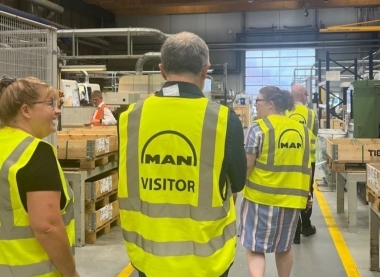Education
Latest
International study visits: Reflections from the Danish system
Last year, Gatsby undertook a visit to Denmark to explore the Danish vocational education and training (VET) system, alongside senior leaders from FE colleges across England.

The visit included meetings with key stakeholders in the technical education system including the Ministry of Children and Education, business and employer bodies, colleges (VET schools) and employers, as well as organisations involved in quality assurance. This offered opportunities to learn more about the structure of the Danish system, the role of each organisation and how they collaborate, as well as reflecting on approaches to addressing common challenges. The Danish system for technical education is based on a dual education and training principle, with an alternating structure between school-based (approximately one third) and work-based learning (approximately two thirds). The system enables students to enter the labour market as skilled workers. Denmark has a youth unemployment rate below the EU average, and 84% of students following a technical education pathway enter full-time employment*.
A collaborative approach built on trust
A recurring perception during the visit was a foundation of trust between government and the social partners, including employer and employee organisations, with each party taking responsibility for their role in the system to ensure sustainable responses to societal challenges and developments. Those we met described a shared obligation between the state and social partners on:
- Development and provision of programmes (including considerations to main programme content, specialisations, duration, structure, examination and entry-level competence)
- Legal framework and governance
- Financing and framework for enterprise-based training (the apprenticeship).
The tripartite collaboration between state, employer and employee organisations was noted as supporting the functioning of effective technical education, with learning outcomes aligned to labour market needs. Recent agreement between the partners focuses on an aim of increasing the number of individuals completing technical education through shared objectives such as greater support in finding apprenticeships, increased reimbursement for companies offering apprenticeships, and increased investments in recruiting and retaining young adults (18-24) in education.
Curriculum flexibilities
Technical education programmes are designed by around 50 national trade committees (responsible for circa 100 main programmes across areas such as care, health, education, agriculture, catering, business, construction and IT) working with social partners. The programmes are approved by the Ministry. The committees’ remit also includes the quality of in-company training. With the proximity to and knowledge of specific trade needs, the national trade committees determine the main programme and curriculum – often described as ‘learning targets’. The approaches to teaching of these targets is determined by the VET schools and employers.
Which programmes a school offers is decided by the Ministry and regional trade committees, based on need and other existing provision in the local area. VET schools shared insight on how they shape the curriculum within the overall programme structure. There was a clear focus on holistic, hands-on training, in order to support students to develop both technical knowledge and skills, and essential skills such as problem-solving, and the ability to work independently as well as part of a team. Therefore, there appeared to be an equilibrium in that there is a clear focus and specialisation element for VET schools in Denmark, whilst still being given flexibility within the programme curriculum delivery for how students achieve the learning targets. The majority of VET programme occupations require examination, with the practical test conducted typically by employers and a VET teacher.
Reflections
There is a clear sense of collaboration and mutual understanding within the system, yet our Danish counterparts noted some challenge in promoting the attractiveness of technical education.
There was a consensus that there is something to learn from Denmark’s ‘step off, step on’ approach to adult learning, which was felt to offer greater accessibility for completion of upper-secondary education.
Participants in the visit considered the advantages and implications of Danish employers’ ability to determine models of attendance for apprentices, and decision-making autonomy limits for VET schools on their programmes. The flexibility emerging within the qualification reform in England provides opportunity to contribute to conversations with learning and reflections from international institutions, consider increased student hours within providers, and further development of employer engagement.
* : Statistics Denmark 2020

